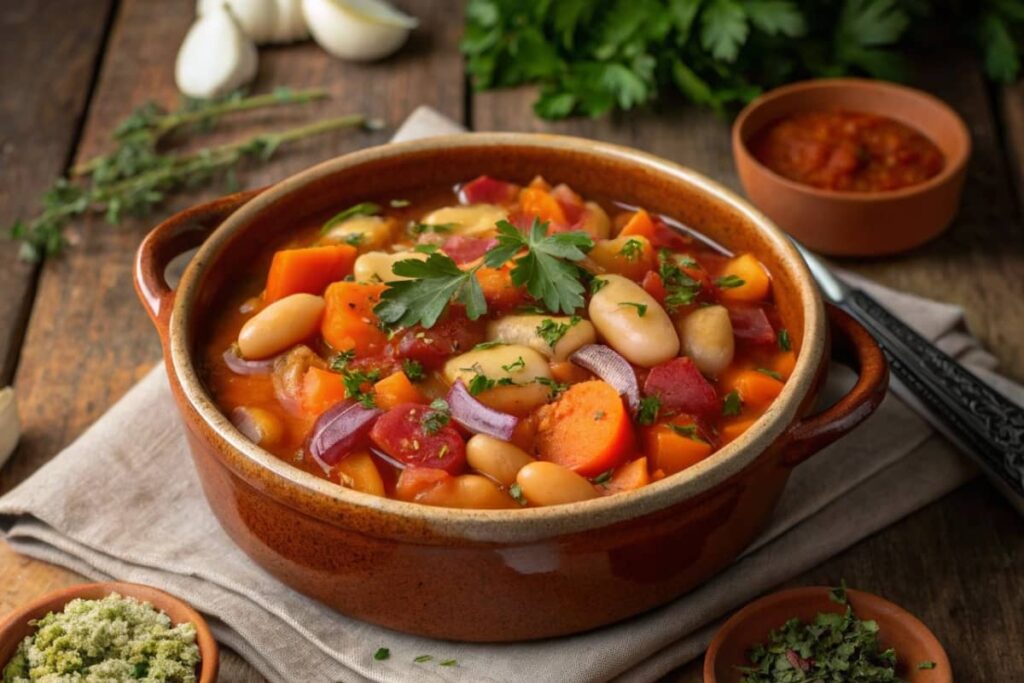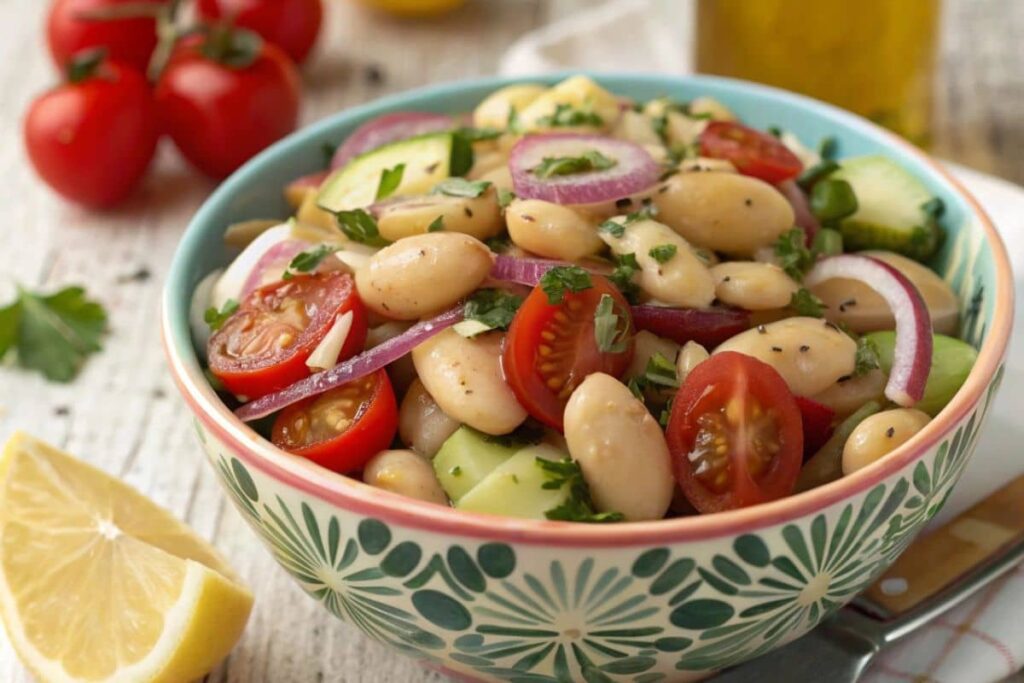Butter beans are a popular ingredient in many cuisines around the world, loved for their creamy texture and mild flavor. However, their name often leads to confusion because they are referred to differently depending on the region, size, or maturity of the bean. So, what is another name for butter beans? The most common alternative name is lima beans, but there are also other regional and culinary terms used to describe this versatile legume.
In this article, we’ll explore the various names for butter beans, the origins of their terminology, and how they are used in cooking. By the end, you’ll have a clear understanding of these beans and their place in the culinary world.
Table of Contents

The Origin of Butter Beans
Butter-beans, or lima beans, have a rich history that dates back thousands of years. They are believed to have originated in Central and South America, specifically in Peru, where they have been cultivated for over 4,000 years.
Why Are They Called Lima Beans?
The name “lima beans” comes from the capital city of Peru, Lima, where the beans were first exported to Europe and other parts of the world in the 1500s. European explorers brought these beans back from their travels, and they quickly became a staple ingredient in various global cuisines.
Why Are They Called Butter Beans?
The name “butter-beans” is more commonly used in the Southern United States and the United Kingdom. This term refers to the beans’ buttery texture and rich, creamy flavor when cooked, especially for the larger, mature variety of the bean.
Common Names for Butter Beans
Depending on where you are in the world or the size of the bean, butter beans may be referred to by several other names:
- Lima Beans: The most widely used alternative name, especially in North and South America.
- Sieva Beans: A term often used for smaller, younger lima beans that are tender and mild in flavor.
- Double Beans: In parts of India, butter-beans are sometimes called double beans, particularly in vegetarian dishes.
- Large White Beans: A generic name for mature, cream-colored lima beans, especially in European markets.
- Chad Beans: A less common name used in certain regions of the Southern United States.
These names often reflect local preferences, bean maturity, or even their culinary use. Despite the variety of terms, all these names refer to the same bean species: Phaseolus lunatus.
Butter Beans vs Lima Beans – Are They the Same?
Butter-beans and lima beans often cause confusion because they refer to the same bean, but their names depend on factors such as regional terminology, size, and maturity. Below, we clarify the differences and similarities to remove any lingering doubts.
Butter Beans vs Lima Beans: The Similarities
- Same Species
Both butter-beans and lima beans come from the same plant species: Phaseolus lunatus. This means they share the same nutritional profile, texture, and cooking properties. - Flavor and Texture
When cooked, both beans have a creamy, buttery texture and a mild, slightly nutty flavor. This unique quality makes them ideal for recipes like stews, salads, and dips. - Forms Available
Both butter-beans and lima beans are available in:
- Fresh pods (when in season)
- Dried beans (requiring soaking and cooking)
- Canned beans (pre-cooked for convenience)
- Frozen beans (ready to boil or steam)
Key Differences Between Butter-Beans and Lima Beans
While they are essentially the same, a few differences set them apart.
Name Variations
The term “butter-beans” is more common in the Southern United States and the United Kingdom.
“Lima beans” is widely used in North America, Latin America, and internationally.
Size and Maturity
Baby lima beans are smaller, younger beans that are tender and light green in color.
Butter-beans are larger, fully mature beans that are cream-colored with a meatier texture.
This distinction is why the name “butter-beans” often refers to the larger, creamier variety of lima beans.
Culinary Applications
Baby lima beans are commonly used in lighter dishes, such as fresh salads, soups, or sautés.
Butter-beans are ideal for hearty dishes like stews, casseroles, dips, or creamy side dishes because of their richer texture.
Why Do Butter-Beans Have Different Names?
The name variations are primarily due to regional preferences and how these beans are used in cooking.
In the United States
Southern cuisine popularized the name “butter-beans” because of their creamy, buttery consistency.
In northern and western parts of the U.S., the name “lima beans” is more commonly used.
In the United Kingdom
The term “butter-beans” is standard, especially when referring to the larger, dried variety of the bean.
Globally
Countries in Latin America and Asia often refer to them as lima beans, given their historical roots in Peru.
In India, they may also be called double beans in certain dishes.
The diversity in naming simply reflects cultural usage and local preferences rather than any actual difference in the beans themselves.
Culinary Uses of Butter-Beans
Butter-beans are a versatile ingredient that works beautifully in everything from light salads to hearty stews. Their creamy texture and mild flavor make them ideal for simple, quick meals or more complex dishes.
Some popular ways to use butter-beans include:
- Mashed as a creamy side dish
- Blended into dips like hummus
- Cooked in stews and casseroles
- Tossed in fresh salads for added protein
- Sautéed with garlic and herbs for a simple meal
Butter-beans bring a rich, hearty element to many dishes, making them a favorite ingredient in various cuisines worldwide.

Soups and Stews
Butter-beans are excellent for soups and stews, absorbing flavors while adding a hearty texture.
- Classic Stew – Simmer butter-beans with tomatoes, garlic, onions, and smoked paprika for a comforting dish.
- Vegetable Soup – Add butter-beans to vegetable broth with carrots, celery, and leafy greens.
- Sausage Stew – Combine with sausage, herbs, and spices for a rich, one-pot meal.
Tip: Substitute butter-beans for cannellini or navy beans in any soup recipe.
Butter-Bean Salads
These beans bring protein and texture to salads, making them a great choice for quick, fresh meals.
- Mediterranean Salad – Toss with cherry tomatoes, cucumbers, red onions, and olive oil.
- Feta & Butter-Bean Salad – Mix with spinach, roasted peppers, and balsamic dressing.
- Warm Salad – Sauté with garlic, kale, and vinegar for a hearty side.
Serving Idea: Butter-bean salads pair well with grilled meats or fish for a balanced meal.
Dips and Spreads
Butter-beans make a great base for creamy dips, offering a healthy alternative to chickpeas.
- Butter-Bean Hummus – Blend beans with tahini, lemon juice, garlic, and olive oil.
- Garlic Dip – Puree with roasted garlic and herbs for a flavorful appetizer.
- Spicy Spread – Mash with chili flakes and cumin for a bold kick.
Tip: Enjoy with pita bread, veggie sticks, or as a sandwich spread.
Side Dishes
Butter-beans are perfect as a creamy, flavorful side for any main course.
- Garlic Butter-Beans – Sauté with olive oil, garlic, parsley, and lemon.
- Creamy Mash – Mash with vegetable broth for a healthy mashed potato alternative.
- With Greens – Toss with sautéed spinach, kale, or collard greens.
Tip: Add butter, cream, or nutritional yeast for extra richness.
Mains and Casseroles
Butter-beans can take center stage in casseroles, curries, and baked dishes.
- Butter-Bean Curry – Simmer in coconut milk with curry spices and tomatoes.
- Casserole – Bake with root vegetables, herbs, and a crunchy topping.
- Stuffed Peppers – Fill bell peppers with butter-beans, rice, and spices.
How to Identify Butter-Beans in Stores
Butter-beans go by different names and come in several forms. Here’s how to find them:
Names Used for Butter-Beans
- Butter-Beans – Common in the UK and Southern U.S.
- Lima Beans – Used in North America and Latin America for all sizes.
- Sieva Beans – Found in specialty markets, often referring to smaller varieties.
- Double Beans – A common name in Indian cuisine.
Forms of Butter-Beans in Stores
Fresh Butter-Beans
- Available in farmers’ markets during late summer and early fall.
- Light green, still in pods, and need shelling.
- How to Identify: Look for firm, plump pods.
Tip: Fresh butter-beans require quick boiling or steaming.
Dried Butter-Beans
- Cream-colored, large, and oval-shaped.
- Sold in clear bags in the dried beans section.
- How to Identify: Look for labels like “large white lima beans” or “butter-beans.”
Cooking Tip: Soak for 8–12 hours before cooking for the best texture.
Canned Butter-Beans
- Pre-cooked and convenient for quick meals.
- Often labeled as “butter-beans” or “lima beans.”
- How to Identify: Look for BPA-free cans when possible.
Tip: Rinse well to remove excess sodium and starch.
Frozen Butter-Beans
- Pre-shelled and partially cooked, found in the frozen vegetable section.
- How to Identify: Look for light green or cream-colored beans in labeled bags.
Cooking Tip: Boil or steam for 8–10 minutes before serving.
Butter-Bean Labels and Packaging
To avoid confusion when shopping, check:
- Label Names – Look for “butter-beans,” “large lima beans,” or “sieva beans.”
- Bean Size – Larger beans are usually labeled as butter-beans.
- Packaging – Clear bags for dried beans help check quality and size.
Where to Buy Butter-Beans
- Supermarkets – Available in dried, canned, or frozen sections.
- Farmers’ Markets – Fresh beans during peak season.
- Health Food Stores – Organic and specialty varieties.
- Online Retailers – Order dried, canned, or frozen beans for convenience.
Tip: For the best flavor and texture, choose fresh or dried butter-beans over canned when possible.
Nutritional Benefits of Butter Beans
Butter beans, also known as lima beans, are not only delicious but also packed with essential nutrients that can significantly contribute to a healthy diet. Whether you’re looking to improve your heart health, increase your protein intake, or simply add more fiber to your meals, butter beans are a powerhouse of nutrition.
1. Rich Source of Plant-Based Protein
Butter beans are an excellent source of plant-based protein, making them ideal for vegetarians, vegans, and anyone looking to reduce meat consumption.
- Protein Content: One cup (170g) of cooked butter beans provides approximately 14 grams of protein.
- Why It Matters: Protein is essential for building and repairing tissues, supporting muscle growth, and keeping you feeling full longer.
2. High in Dietary Fiber
Butter beans are packed with dietary fiber, which is crucial for digestive health and overall well-being.
- Fiber Content: One cup of butter beans contains about 7–8 grams of fiber.
- Health Benefits:
- Supports healthy digestion and prevents constipation.
- Helps regulate blood sugar levels by slowing down the absorption of glucose.
- Promotes satiety, which can aid in weight management.
Tip: Pair butter beans with whole grains like quinoa or brown rice for a high-fiber, balanced meal.
3. Loaded with Essential Vitamins and Minerals
Butter beans are rich in essential vitamins and minerals that play a vital role in maintaining a healthy body:
- Iron: Essential for red blood cell production and preventing fatigue.
- Potassium: Helps regulate blood pressure and supports heart function.
- Magnesium: Promotes bone health, muscle relaxation, and energy production.
- Folate (Vitamin B9): Crucial for cell growth and development, especially during pregnancy.
- Zinc: Supports immune function and wound healing.
Did You Know? Just one cup of butter beans provides about 20% of your daily potassium needs.
4. Low in Fat and Calories
Butter beans are naturally low in fat and calories, making them an excellent option for healthy, balanced meals:
- Calories: A one-cup serving contains approximately 200 calories.
- Fat: Very low in fat, with less than 1 gram of fat per serving.
This makes butter beans perfect for those looking to manage their calorie intake while staying full and satisfied.
5. Heart-Healthy Benefits
Butter beans support heart health in several ways:
- High in Fiber: Helps reduce LDL (“bad”) cholesterol levels, which lowers the risk of heart disease.
- Rich in Potassium: Helps regulate blood pressure by balancing sodium levels in the body.
- Low in Saturated Fat: Minimizes unhealthy fats that contribute to cardiovascular issues.
Tip: Incorporate butter beans into your diet as a substitute for meat in hearty stews and curries to enjoy their heart-friendly benefits.
6. Great for Blood Sugar Management
Butter beans have a low glycemic index (GI), meaning they cause a slower rise in blood sugar levels:
- The high fiber content helps slow down the absorption of sugars into the bloodstream, making butter beans a good choice for individuals with diabetes or anyone looking to stabilize energy levels.
Pro Tip: Add butter beans to salads, soups, or stews for a balanced, blood sugar-friendly meal.
7. Supports Weight Management
Because butter beans are high in protein and fiber, they help keep you full longer, reducing the urge to overeat. This makes them an ideal addition to weight-loss diets:
- Filling and Satisfying: Meals that include butter beans promote satiety and reduce cravings.
- Low in Calories: They allow you to enjoy a substantial portion without consuming excessive calories.
Tip: Replace high-calorie ingredients like cream or cheese with mashed butter beans in sauces and dips for a lighter, nutritious alternative.
Why Butter Beans Deserve a Place in Your Kitchen
With their impressive nutritional profile and versatility, butter beans offer numerous health benefits:
- High Protein and Fiber: For digestive health, weight management, and energy.
- Packed with Minerals: Including iron, potassium, and magnesium for overall well-being.
- Low in Calories and Fat: Making them a guilt-free addition to meals.
Whether you use them in salads, soups, stews, or dips, butter beans are a wholesome, affordable, and nutrient-rich food worth incorporating into your daily diet.
FAQ: Butter Beans – Names, Benefits, and Recipes
1. What is another name for butter beans?
Butter beans are also commonly known as lima beans. This name comes from the capital city of Peru, where the beans were first exported. If you’re curious about the differences and origins, check out our guide: Are lima beans and butter beans the same?.
2. Are butter beans healthy for you?
Yes, butter beans are extremely healthy! They’re packed with plant-based protein, fiber, and essential nutrients like iron, potassium, and magnesium. They’re low in fat and calories, making them ideal for a balanced diet. Learn more about their health benefits in Are butter beans healthy for you?.
3. What are some easy butter bean recipes I can try?
Butter beans are versatile and can be used in soups, stews, salads, dips, and side dishes. Whether you want a hearty butter bean stew or a fresh butter bean salad, we have plenty of ideas in our list of butter bean recipes.
4. How do I cook dried butter beans?
To cook dried butter beans, soak them for 8–12 hours (or overnight), then simmer them in fresh water for about 40–60 minutes until tender. Adding aromatics like garlic, bay leaves, or onion during cooking enhances their flavor.
5. Can butter beans replace other beans in recipes?
Yes, butter beans can substitute for cannellini beans, navy beans, or chickpeas in most recipes. Their creamy texture and mild flavor make them a great addition to soups, casseroles, and dips.
6. Where can I buy butter beans?
Butter beans can be found in most grocery stores, sold as dried, canned, or frozen. Look for names like “large lima beans” or “butter beans” on the packaging.
Conclusion: Discover the Versatility and Benefits of Butter Beans
Butter beans, also known as lima beans, are a versatile and nutritious ingredient that can elevate any dish. Whether you use them in hearty stews, refreshing salads, or creamy dips, butter beans offer a delicious combination of flavor, texture, and health benefits. Their high protein and fiber content make them perfect for vegetarians, vegans, or anyone looking to incorporate more plant-based options into their meals.
If you’ve ever wondered “What is another name for butter beans?” or questioned their nutritional value, you now know that these beans are not only healthy but also widely known as lima beans.
No matter what you call them—butter beans or lima beans—one thing is certain: they are a must-have staple in every kitchen!
